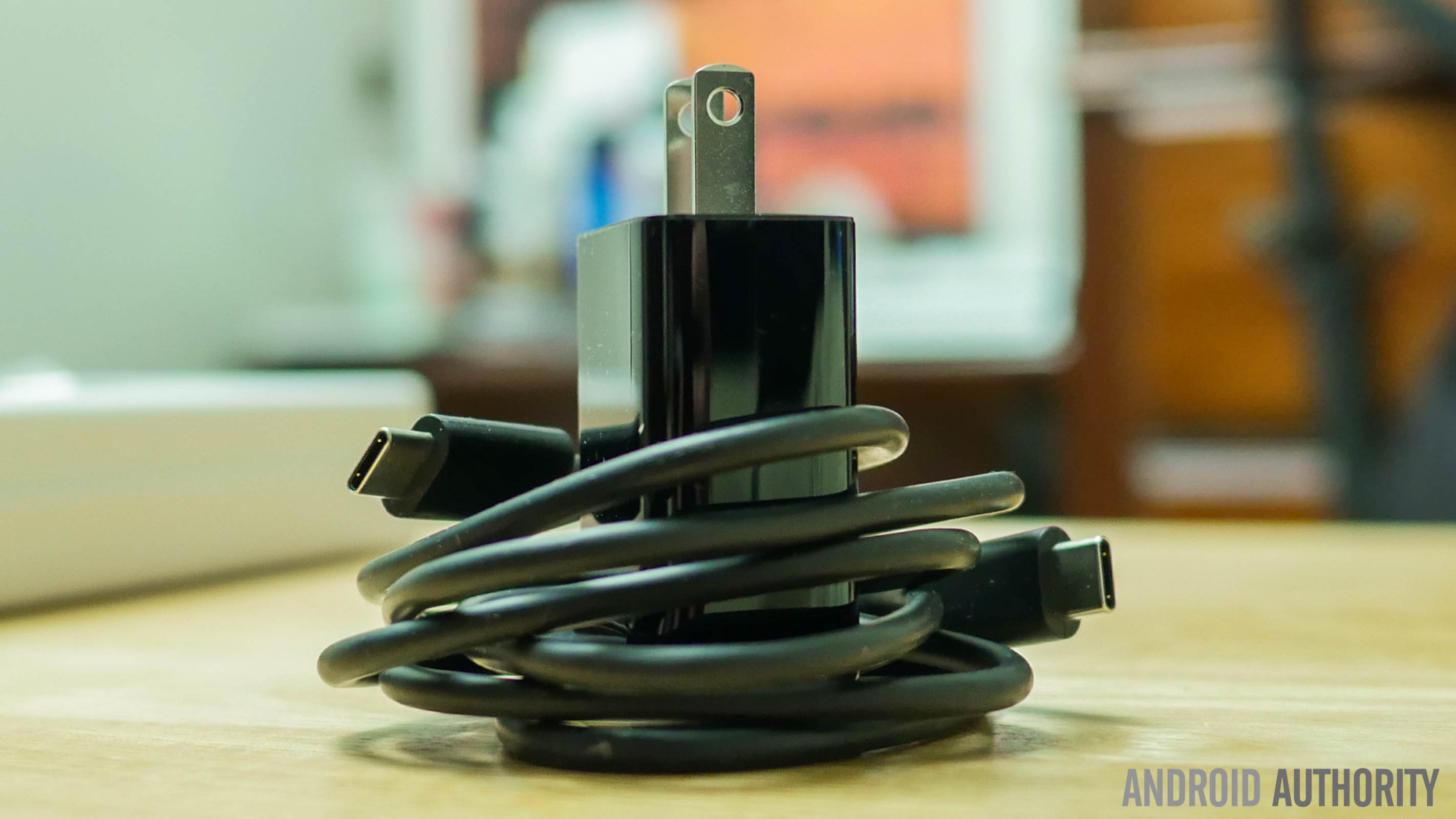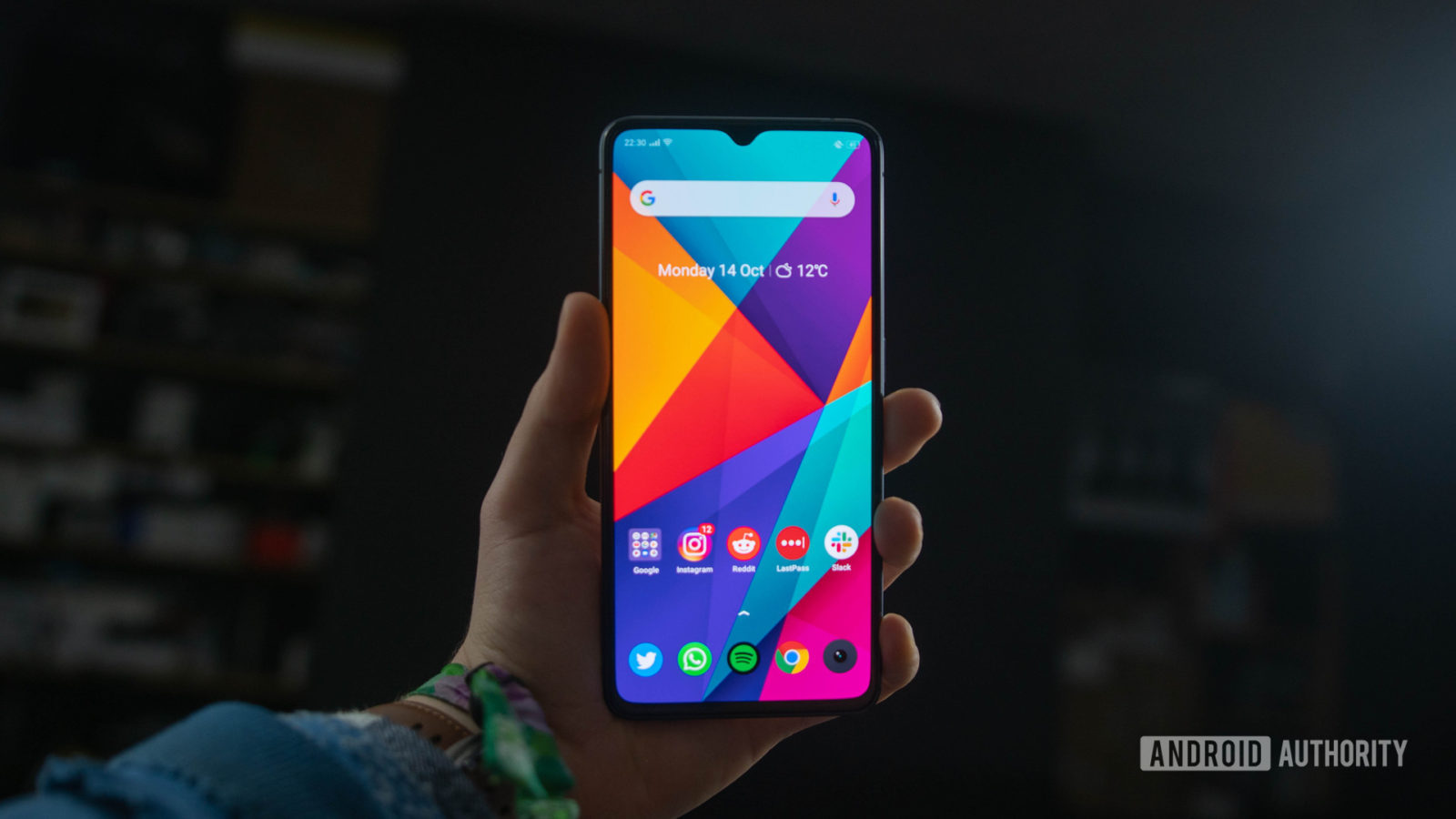Realme made a real statement with the X2 Pro in November when it told the industry that it was out to compete with OnePlus and Xiaomi in the “flagship killer” market. Three months later, the Chinese firm is back with its most powerful smartphone to date: the Realme X50 Pro 5G.
With a top-shelf SoC, lots of RAM, a high-refresh-rate display, and 5G connectivity, Realme is creating its own niche within the market. Until now, no other affordable flagship has sported 5G connectivity. That all changes with the X50 Pro 5G.
Is this phone too good to be true? Or are you better off purchasing from a well-established brand such as OnePlus or Xiaomi?
Find out in Android Authority’s Realme X50 Pro 5G review.
The physical experience

The glass-sandwich design has been played out an awful lot, and this phone looks perhaps too much like other Realme phones. The main design carryover is the camera module on the back. It’s positioned almost identically across Realme phones. This means that, from a distance, the X50 Pro 5G doesn’t look much different from a Realme 5 Pro. It does, however, feel far better in the hand than previous efforts. The rear glass curves into the metal frame, which itself helps you grip the phone due to the plain finish.
A couple of subtle features have been switched up to make the device feel more unique. To start, the rear glass is an understated, matte affair with some interesting color options. We have the Moss Green variant, and you can also get Rust Red. These colors change shades depending on how the light catches the phone. It’s really rather nice. The downside is that the finish is rather slippery, which is something to watch out for.
I've not encountered a Realme phone this solid. You could do some serious damage with it!
What impressed me most is the build quality of the X50 Pro 5G. I’ve not used a Realme phone that’s felt this solid before. There aren’t any rattles or creaks, and the buttons are clicky and tactile. At 207g, the device feels hefty and solid, like you could do some serious damage with it! That said, there isn’t any kind of IP certification, meaning that you’ll have to be careful with the device near liquids.
The bottom features a USB-C port, a microphone, the main speaker, and the dual-SIM card slot. At the top, there’s a microphone. On the left, there are separate volume buttons. On the right, there’s a color-accented power button. It has a gold-colored insert for added flare.
Realme introduced its first 90Hz display in the Realme X2 Pro last year. The X50 Pro 5G continues the 90Hz movement with its 6.44-inch Full HD+ Super AMOLED display, sourced from Samsung. This panel also has a 180Hz sample rate, to aid with touch-response.
Continue reading: Can you really tell the difference between a QHD and FHD display?
I found the display to be pretty good, which is to say that it wasn’t bad, nor was it exceptional. It got pretty bright at 495 nits sustained, which is a touch higher than most. Colors were a little muted, even when in Vivid mode. Perhaps I’m used to a more vibrant display, but this one came across as a bit dull.
The fundamentals

The main reason you might be persuaded to buy the X50 Pro 5G is the spec sheet. With a Snapdragon 865, this is one of the most powerful smartphones at the moment. You’re offered 6, 8, or 12GB RAM and either 128 or 256GB of UFS 3.0 storage.
All of this grunt results in effortless speed and usability. Similar to the build quality, I’ve not encountered a Realme device that feels this smooth and runs this well. Gaming is a great experience on this phone thanks to the processor and 90Hz display. And with 128GB base storage, there’s plenty of room for even the biggest mobile titles.
Continue reading: Phones with 12GB of RAM: What are your best options?
The one problem to note here is that relatively few games support the 90Hz display. This isn’t Realme’s fault. There are still mobile game developers that refuse to develop for high refresh rate displays. Fortnite and PUBG Mobile are particularly annoying in this respect. The phone defaults to 60Hz for these games.
I noticed just one performance issue with the X50 Pro 5G: the camera app would crash and restart every so often. It wasn’t every time that I used the camera. This is something that could presumably be fixed in a software update.
The Realme X50 Pro 5G relies on sub-6GHz for 5G connectivity, which means it works in both the U.K. and Europe. Having a 5G phone with these specs priced under €600 is remarkable, and the X50 Pro 5G is the first of its kind. WiFi 6 is also available on the phone, which can support download speeds of up to 9.6Gbps.
The X50 Pro 5G didn’t seem to give me more battery life compared to the X2 Pro despite the slightly larger battery. If anything, both phones exhibited similar battery life. The 4,200mAh cell managed a day and a half after setting everything up and downloading my apps. I would fully expect at least a full day’s worth of usage at high brightness.
I would expect a full day of heavy usage even at a high brightness setting.
What is worth noting is how 65W SuperDart charges the phone vs. 50W SuperVOOC. This new SuperDart charger was slightly slower to 90%, but then much slower from 90% to 100%. The full 0% to 100% charge took 46 minutes, whilst 0 to 90% took just 30. This is very likely a battery-health saving measure. It seems to trickle charge the last 10% to maintain battery health.
RealmeUI has really improved
Realme started out using ColorOS on its phones, which did not provide the best user experience. For example, it saddled users with non-removable bloatware and a less-than-mature design aesthetic.
It’s safe to say that Realme has found its footing with RealmeUI. This user experience is based on Android 10, making it up-to-date and current. That modern feeling is obvious throughout the system. The notification shade, the settings menu, and the app drawer, for example, all feel closer to stock.
But the best bit, by a country mile, is the reduction of pre-installed bloatware — specifically the infamous Hot Apps folder. It’s gone. RealmeUI is now at a point where I could compare this to Samsung’s OneUI, which is to say that this UI is pretty damn good.
Is the quad camera any good?

Flagship killers have a universal Achilles heel: their cameras. The X50 Pro 5G aims to alleviate that with a stout set of hardware. Namely, there’s a 64MP GW1 main camera, an 8MP wide-angle, a 12MP 2x telephoto, and a 2MP monochrome depth camera on the back.

With the caveat that the software on our Realme X50 Pro review unit was not final, the images from this camera setup are definitely not flagship-level. In good lighting, you get some good dynamic range, color accuracy, and sharpness. However, as soon as conditions become sub-par, you’re left with equally sub-par photographs.

There’s a lot of noise-reduction going on here, and that means some images look closer to oil paintings than to photos. This noise reduction can kick in unexpectedly even in good lighting. This image of some leaves is a perfect example — it was not a dark afternoon.

Realme says the X50 Pro 5G is capable of 20X zoom on its website, but I couldn’t even manage to capture a clean looking 5X image. As you can see, there is a lot of artificial sharpening and digital artifacts in places. Look in the shot of the church tower below. The most zoomed-in shot clearly reveals these artifacts. This is not good enough.
- Ultra-Wide
- Standard
- 2X zoom
- 5X zoom
The X50 Pro 5G can shoot 20X zoom photos, though only via digital cropping. What this means is that your final 20X images look like they’ve had a cheap cartoon filter applied to them. There is little to no detail whatsoever, meaning many users will find the 20X zoom feature useless. Also, the app only shows zoom buttons up to 5X. From then on, you have to pinch to get the full 20X.
- Standard
- 2X zoom
- 5X zoom
- 20X zoom
Around the front, you’ll find a 32MP IMX616 selfie camera and an 8MP wide-angle selfie camera. These cameras can produce some decent selfies, but I have two concerns. The first is that the phone finds it hard to nail focus, and so you may have to retake the photo. The second is that, even with HDR on, dynamic range is unexceptional.
There’s also a significant drop-off in quality when switching from the standard to the ultra-wide selfie camera. The second shooter introduces a lot of noise and throws dynamic range out the window. This is me taking a selfie on a typically overcast day in my garden. I might be exposed fairly well, but the top third of the image is completely blown out. Not good enough.
The phone can shoot 4K video at up to 30fps on the main camera. Neither this resolution nor Full HD 60fps supports the ultra-wide camera. In Full HD at 30fps, the ultra-wide is then supported alongside the primary shooter. Up front, we have Full HD 30fps support across both front-facing cameras. The slow-motion offered is 1080p at both 240fps and 480fps.
The video footage looks sub-par. There is a heavy crop in the viewfinder at 4K 30fps, but the footage comes out without said crop. This hinders framing. There’s a lot of contrast, a lot of processed sharpness, and some frame drops that you’ll easily notice in the video footage above. Slow-motion is not captured in 1080p — which is what the camera app tells me. It’s soft and pixelated, but the motion does look smooth.
Click here to view the Google Drive folder of full-sized images!
Continue reading: The best Android camera phones you can get
Is the Realme X50 Pro 5G worth €600?
This handset is priced significantly higher than other flagship killers, and that’s going to be controversial. The X50 Pro 5G starts at Rs. 37,999 (~$528) for the 6/128GB option, then goes to Rs. 39,999 (~$556) for the 8/128GB option, and then to Rs. 44,999 (~$625) for the 12/256GB option. In Europe, that range is €599, €669, and €749, respectively. This makes Realme’s latest affordable flagship far more expensive than similarly-spec’d phones in the market.
However, Realme throws a Snapdragon 865 and 5G into the mix. This is a whole new niche. Given the rest of the device’s features, the X50 Pro 5G seems to be a good value.
Continue reading: Affordable 5G smartphones are coming soon
Should you buy the Realme X50 Pro 5G?

When you consider that the only real rivals to this device are the OnePlus 7T and Realme X2 Pro, the X50 Pro 5G starts to look like a pretty good option. For €100 extra, you’re getting 5G connectivity, a more premium build, and the latest silicon.
This is, by far, the best handset that Realme has ever made. It excites me about what we might see from the brand next. It’s just a shame that the Realme X5 Pro 5G doesn’t quite live up to the excellent imaging experience delivered by the X2 Pro.
What do you think about the Realme X50 Pro 5G? Let us know in the comments!
from Android Authority https://ift.tt/37Q4sIx
via IFTTT


















Post a Comment